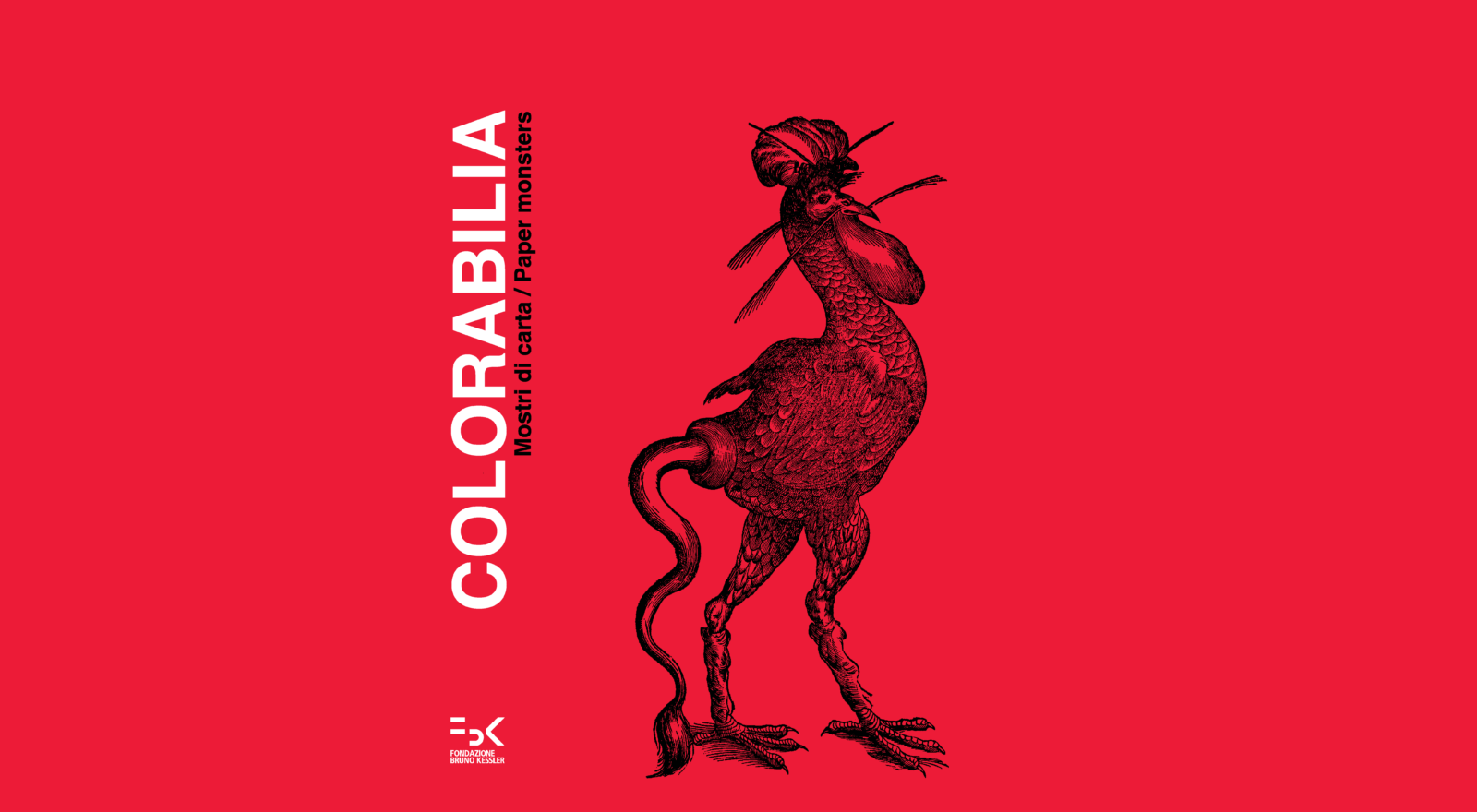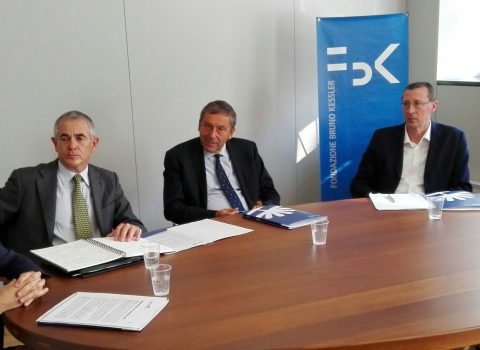Colorabilia: imaginary animals to colour and share
Fifty free copies of the illustrated book containing illustrations taken from the precious seventeenth-century woodcuts of the FBK Library.
The cultural heritage cannot be the prerogative of a few: for this reason the Fondazione Bruno Kessler Library has decided to share some woodcuts of its bibliographic heritage, making them available to a wide audience through the book Colorabilia. Mostri di carta/Paper monsters (FBK Press), created together with the Communication and External Relations Service. An illustrated book (colouring book) of images of animals – real or imaginary – to colour, recreate, transform and share.
On the occasion of the incoming Christmas holidays, FBK will award 50 complimentary paper copies of Colorabilia!
Participation is simple: the only requirement is to subscribe to the biweekly newsletter of FBK Magazine (information for new subscriptions available here). The first 50 subscribers (new or not) who will send an email to expressing their interest by 20/12/2022 will receive a free copy of the book.
Almost all the images are woodcuts taken from two volumes of the naturalistic encyclopedia of Ulisse Aldrovandi (1522-1605), a Bolognese scholar of the early modern age. He actually managed to edit only a small part of the work before he died; his texts were then supplemented by various people, to prepare them for publication. The FBK library, among its 1,800 rare books, has three volumes of the work (some in the original edition, others in reprints of the seventeenth century) of which two have been a source of inspiration for this colouring book. Only one image comes from the works of the biologist Francesco Redi instead.
Each illustration has been graphically developed by Nicola Gadler of the Officina Artigianelli project, supervised by Moira Osti of the FBK Communication and External Relations Service, and is accompanied by a short text edited by Anna Gialdini of the FBK Library that paraphrases the original texts of the volumes – detailed descriptions of the physiology, behaviour and place in the classical, medieval and modern culture of the animals depicted – sometimes with rather amusing results! The scientific sensitivity of the time was obviously different from that of today, although in their own way these works were extremely accurate. In fact, the woodcuts of the time are remarkable not only for their beauty: they were a powerful tool for spreading science.
Aldrovandi also had a collection of specimens of various types – dried animals, etc. – on which he based his research. As a good scientist, he even warned not to confuse authentic dragons with imitations available on sale, made with bodies of dried animals!
Woodcutting is a printing technique used in Europe since the 15th century, but has been widespread in Asia for a long time (in Japan it has been attested since the 8th century). It is characterised by thick lines, obtained by imprinting a carved wooden matrix on paper or fabric: it therefore lends itself to creating sharp images, with large gaps that can be coloured. One thing to note about woodcuts is that they were often the result of the work of many people who took care of the different phases, from the creation of the drawing to the carving of the matrix to the use in typography.
In the woodcuts of the early modern age the colour could be obtained by one or more coloured ink prints (mainly black and red, but also in other colours or gold), or by a subsequent application of pigments (often watercolour).
In the book made, the chosen colours wink to the first colours used for printing (in addition to black, of course, red). It is a general reference, however (the works of Aldrovandi and Redi were printed only in black ink). The other reference to colour is, of course, the “filler” that will be up to the end users of the book to realize: this happened even in the early modern age, but only on individual copies (it was an additional cost and therefore generally it was a service requested by a single buyer of the book, not realized for all the copies out of the printing press).
Colorabilia therefore aims to be a project for the opening up and “democratisation” of cultural heritage, which is often – due to unavoidable security matters, climatic conditions, etc. – stored in areas not accessible to the general public.
A warm welcome to the fantastic world of Colorabilia!
The book will soon be avalable online at the following link:
https://books.fbk.eu/pubblicazioni/titoli/colorabilia/
Pursuant to art. 13 of EU Regulation no. 2016/679 (GDPR), we inform you that the processing of personal data by FBK is necessary to manage the assignment of free copies. This policy supplements the Privacy related to the biweekly newsletter of the FBK Magazine and available at the following link https://www.fbk.eu/en/privacy-cookie/.

